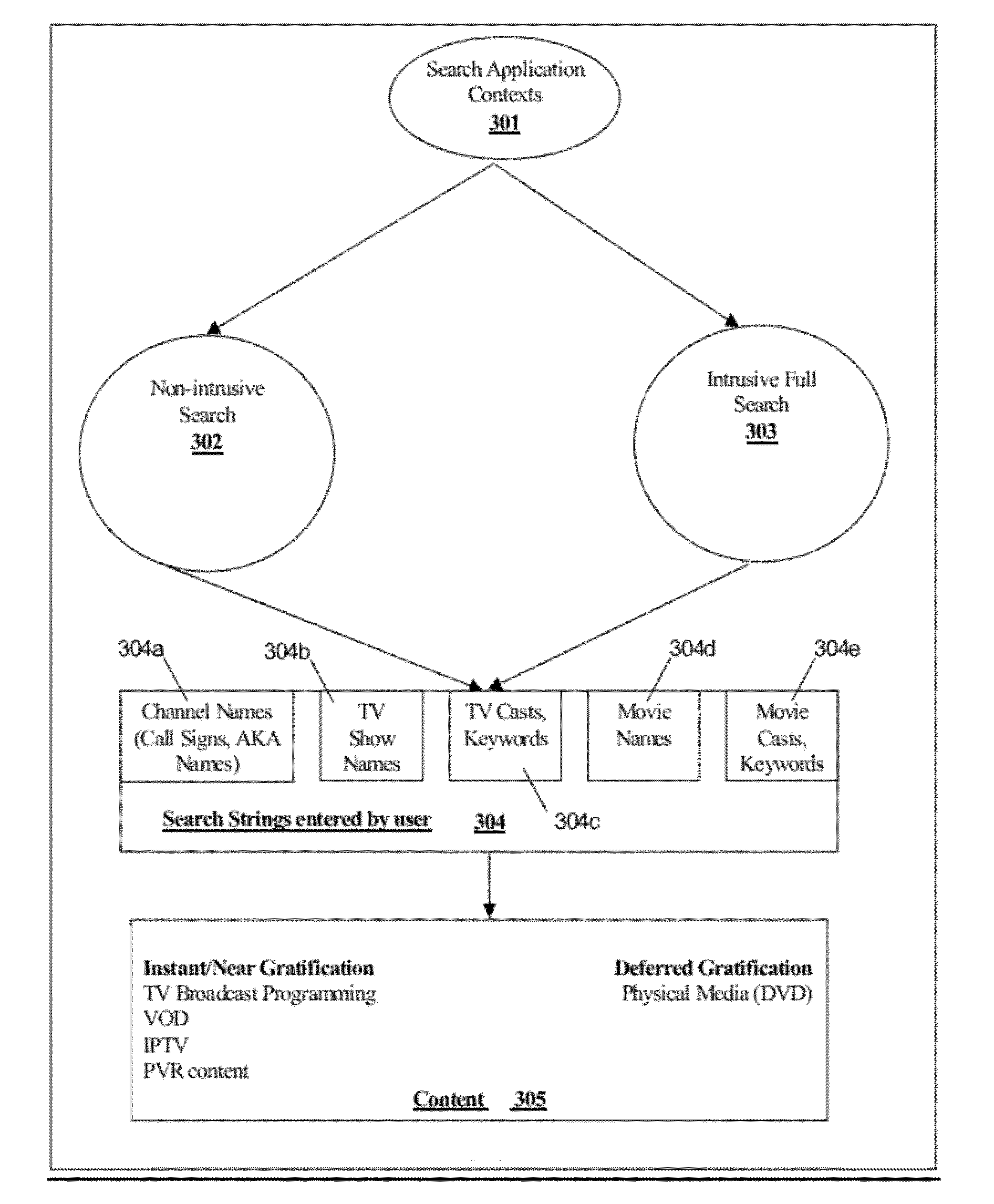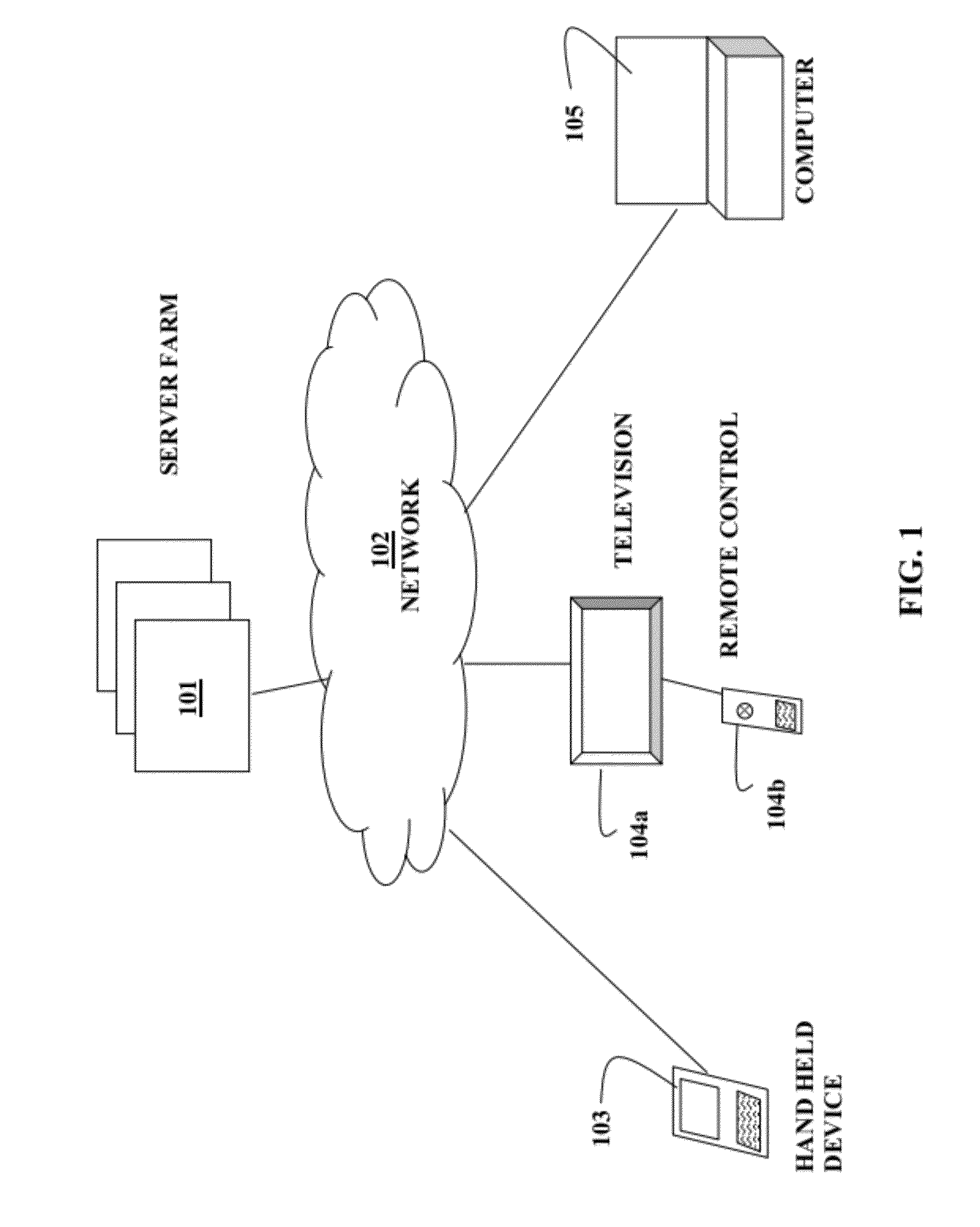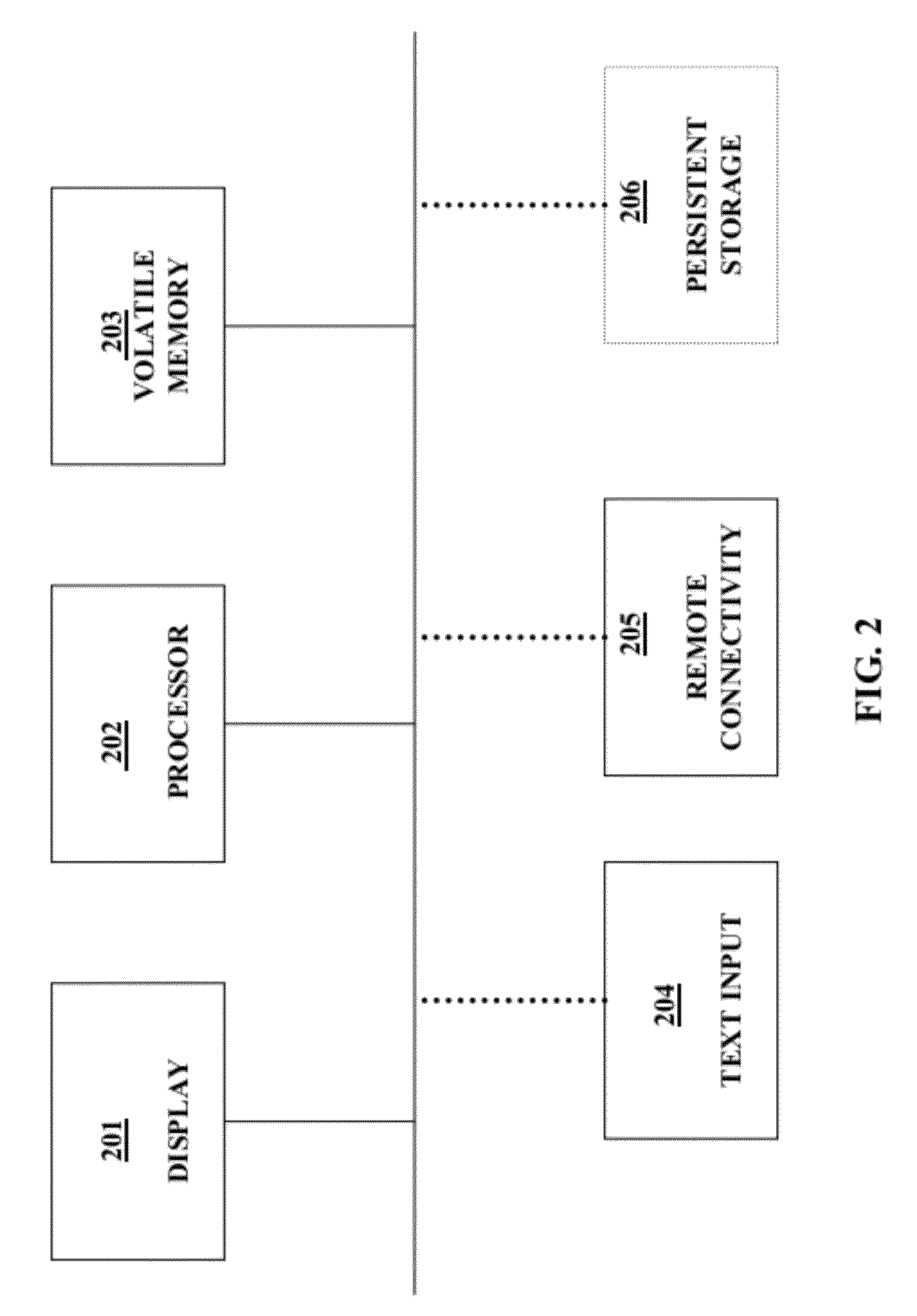Method and System for Incremental Search with Reduced Text Entry Where the Relevance of Results is a Dynamically Computed Function of User Input Search String Character Count
a text entry and incremental search technology, applied in the field of data search techniques, can solve the problems of inconvenient use of user interfaces, inability to quickly and easily help users, and difficulty in users' channel number memory, so as to achieve the desired result easily and reduce the effort involved
- Summary
- Abstract
- Description
- Claims
- Application Information
AI Technical Summary
Benefits of technology
Problems solved by technology
Method used
Image
Examples
case 1
[0044] Pi (11, . . . SK−1 (11 has a match (Match[Pi+1,SK]={mK1 , mK2 . . . mKr} where 1
case 2
[0045] Pi (11, . . . SK−1 (Match[Pi,Sj]={mj1, mj2 . . . mjr} where 11, mK2 . . . mKr} where 1Dmax (11, . . . SK−1 (note it may be occluded even for a value of j1, . . . SK−1. This may be a preferred behavior, i.e., no result is allowed to hold on to the precious display estate beyond a particular character count. As the subspaces are all made equal with the increase in character count, preference could be given for the results from the new subspaces, since the others would have been monopolizing the display space in this scenario. Also note that an excluded result that fell from its position in the top displayed set, would work its way back again into view if sufficient characters that form a larger prefix of that result is entered. This reclamation of lost position will naturally occur, with the entry of more characters—the uniqueness of the string would help bring it back up.
[0046]The other two cases, (1) both Pi and Pi+1 having no match with subspaces and (2) Pi (11, . . . SK−1 b...
PUM
 Login to View More
Login to View More Abstract
Description
Claims
Application Information
 Login to View More
Login to View More - R&D
- Intellectual Property
- Life Sciences
- Materials
- Tech Scout
- Unparalleled Data Quality
- Higher Quality Content
- 60% Fewer Hallucinations
Browse by: Latest US Patents, China's latest patents, Technical Efficacy Thesaurus, Application Domain, Technology Topic, Popular Technical Reports.
© 2025 PatSnap. All rights reserved.Legal|Privacy policy|Modern Slavery Act Transparency Statement|Sitemap|About US| Contact US: help@patsnap.com



